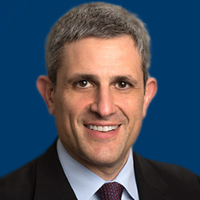Commentary
Video
Dr Narayan on the Utility of Nadofaragene Firadenovec in NMIBC and Beyond
Author(s):
Vikram M. Narayan, MD, discusses the utility of nadofaragene firadenovec in patients with non–muscle-invasive bladder cancer and beyond.
Vikram M. Narayan, MD, assistant professor, Department of Urology, Emory University School of Medicine, Winship Cancer Institute; director, Urologic Oncology, Grady Memorial Hospital, discusses key takeaways regarding the utility of nadofaragene firadenovec-vncg (Adstiladrin) in patients with BCG-unresponsive non–muscle-invasive bladder cancer (NMIBC).
Following the readout of the final 5-year analysis of a phase 3 trial (NCT02773849) investigating nadofaragene firadenovec in this patient population, understanding how to use this agent in other treatment arenas remains at the forefront of consideration, Narayan says. When considering what the future holds for the use of nadofaragene firadenovec in other patient populations, Narayan states that there is ongoing research exploring the use of this agent in patients with low-grade upper tract urothelial cancer. In this setting, the drug is administered using a balloon catheter to help maintain it in the renal pelvis, he explains.
Additionally, there is interest in using nadofaragene firadenovec in patients with intermediate-risk bladder cancer, specifically in the non–high-risk BCG-unresponsive patient population, where there is significant unmet need, Narayan continues, adding that recurrent low-grade disease is another potential area of interest for the investigation of this agent. Nadofaragene firadenovec is being evaluated in various other urothelial cancer patient populations as well, he emphasizes.
Furthermore, there is a focus on better stratifying patients with high-risk, low-risk, and intermediate-risk disease using biomarkers, Narayan expands. Urinary biomarkers have been studied with the UroAmp test, and data from phase 2 trials with nadofaragene firadenovec were presented at the 2024 AUA Annual Meeting, he elucidates. The goal is to replicate these findings with phase 3 data to further validate them, Narayan notes. This approach will enable future clinical trials to go beyond categorizing patients simply by the presence of carcinoma in situ or papillary disease, allowing for a more detailed understanding of the specific mutations and minimal residual disease levels that are present in each patient, Narayan adds, concluding by saying that this ongoing research will be crucial for identifying which patients are best suited for these treatments.









